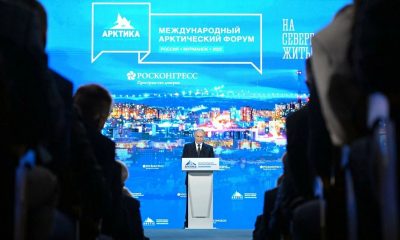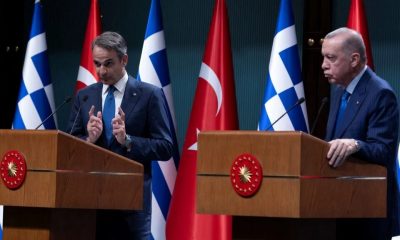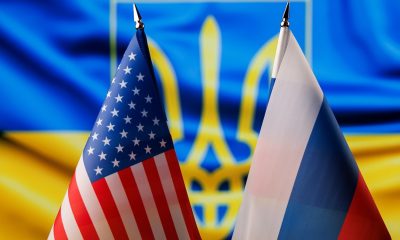EUROPE
NATO plans to seize Chinese infrastructure in Europe in case of ‘wider conflict with Russia’
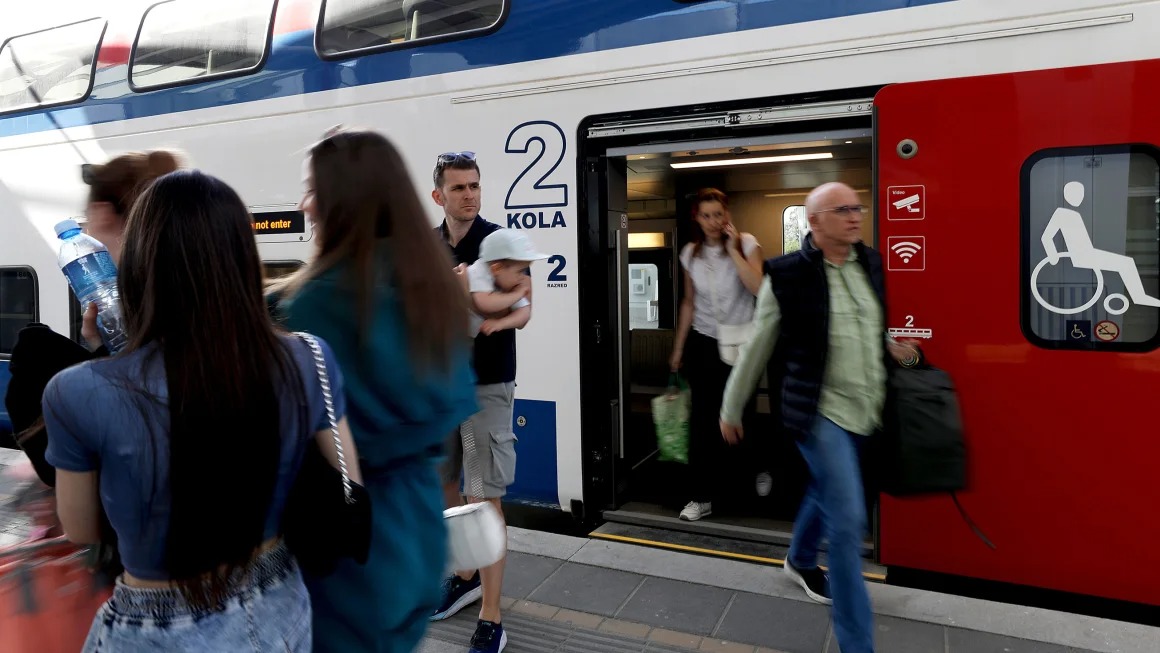
NATO officials are discussing taking action to reclaim some Chinese-owned infrastructure projects in Europe in the event of a wider conflict with Russia in the east of the continent, three officials involved in the talks told CNN.
A decade ago, as Europe struggled to emerge from the economic crisis caused by the global financial meltdown, the promise of infrastructure funding from Chinese-owned investment companies seemed like a great “windfall”, according to CNN.
Now, with the biggest ground war in Europe since World War II and Western warnings that Beijing is aiding Russia in the war, Nato countries see these investments as a “liability” and the allies have begun discussing ways to buy back some of these projects, officials said.
According to one US official, there are fears that Beijing could use its infrastructure in Europe to provide material support to Russia if the conflict escalates. The goal is to find a way forward well in advance of any potential conflict, the officials said.
Discussions at an early stage
The discussions also show that the NATO alliance is increasingly focused on China. The People’s Republic of China was strongly targeted in a joint statement issued by 32 heads of state and government at the 75th anniversary summit in Washington last Wednesday.
Discussions on infrastructure measures are still in the early stages, according to three officials involved, with varying levels of commitment among NATO members. One NATO diplomat said the United States, which is leading the talks, should continue the discussions bilaterally to ensure the necessary support.
From railways linking Eastern Europe to China to ports in the North and Baltic Seas, China has financed tens of billions of dollars of infrastructure investment under the Belt and Road Initiative (BRI), which European countries signed up to in 2013.
Infrastructure to be nationalised in case of war
A NATO official said that if war broke out, infrastructure ‘would almost certainly be nationalised or nations would temporarily take operational control under emergency security measures’. China could then take the confiscating countries to court, he said.
US officials believe that moves by European countries to force Russia to sell its assets after the Ukraine war have set a precedent for such takeovers or sales. For more than a year, Finland had repeatedly blocked the operation of the Helsinki Shipyard, a maker of icebreaking ships once owned by a Russian company, until Russia sold it to a Canada-based organisation in late 2023.
A senior US official said the talks had expanded beyond low-tech to include high-tech areas such as quantum computing, semiconductors and telecommunications infrastructure.
Blinken signals Pacific alliance against China
US Secretary of State Antony Blinken said on Wednesday that the war in Ukraine may be the reason why European and Asian countries have realised that their security depends on each other.
“Japanese Prime Minister Kishida said that what happens in Europe today could happen in East Asia tomorrow, and perhaps that was crystallised in Ukraine. When Russia renewed its aggression against Ukraine, Japan stood up, South Korea stood up, Australia stood up, New Zealand stood up, reflecting a recognition that these problems are interconnected,” Blinken said.
France reluctant to use NATO against China
While most NATO members have expressed some level of concern about China’s infrastructure, two officials involved in the discussions told CNN that France in particular has tried to shift the infrastructure debate to the European Union, which has authority over other economic issues.
According to the officials, tensions with France and other countries have influenced the language of the statement, with countries arguing that NATO is not the best platform to challenge China.
But many member states have a very real fear that Beijing could use these assets against the alliance in the future and continue to push for the alliance to defend against this threat, according to CNN.
EUROPE
Huawei lobbying investigation leads to searches at EP offices in Strasbourg
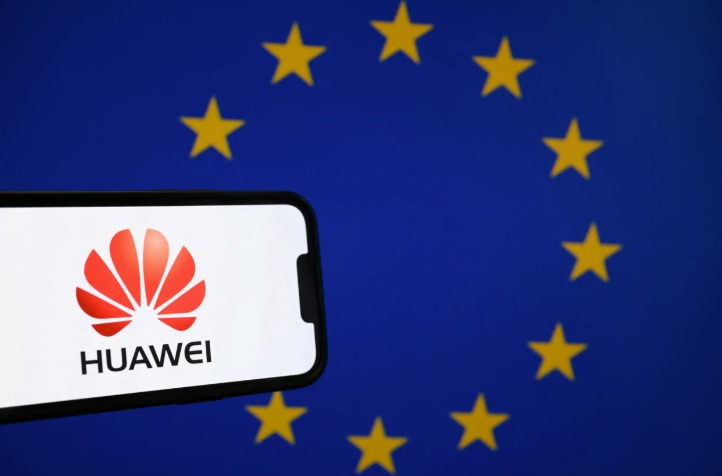
According to two officials knowledgeable about the matter who spoke to POLITICO, police authorities conducted searches in two offices belonging to European Parliament (EP) political assistants in Strasbourg.
Police had previously sealed the offices on March 13, the same day authorities raided more than 20 addresses in Belgium and Portugal as part of an investigation into alleged corruption within the EP benefiting Huawei. Officials confirmed on Thursday that these offices were searched.
One of the officials confirmed that the search in Strasbourg was part of the investigation into Huawei’s lobbying activities.
Members of Parliament and their assistants have offices in the institution’s building in Brussels, where regular parliamentary activities take place, and at the official seat in Strasbourg, France, where plenary sessions are held.
Two offices in Brussels were sealed and searched earlier this month and have since been returned to their occupants.
According to judicial documents seen by POLITICO, Belgian prosecutors are investigating whether Huawei made illegal payments to commission an open letter signed by eight European parliamentarians defending the interests of the Chinese tech giant.
The Belgian prosecutor’s office announced that four individuals are accused of corruption and forming a criminal organization, and one person is accused of money laundering.
A parliamentary assistant to Italian center-right MEP Fulvio Martusciello was arrested in Italy on March 20. According to the institution’s press services, the assistant has been suspended by Parliament. It is alleged that Martusciello’s office in 2021 spearheaded the effort to promote the letter under investigation.
A Huawei spokesperson previously stated that the company “has a zero-tolerance policy towards corruption or other misconduct and is always committed to complying with all applicable laws and regulations.”
EUROPE
Leaked draft reveals German coalition disagreements on key policies
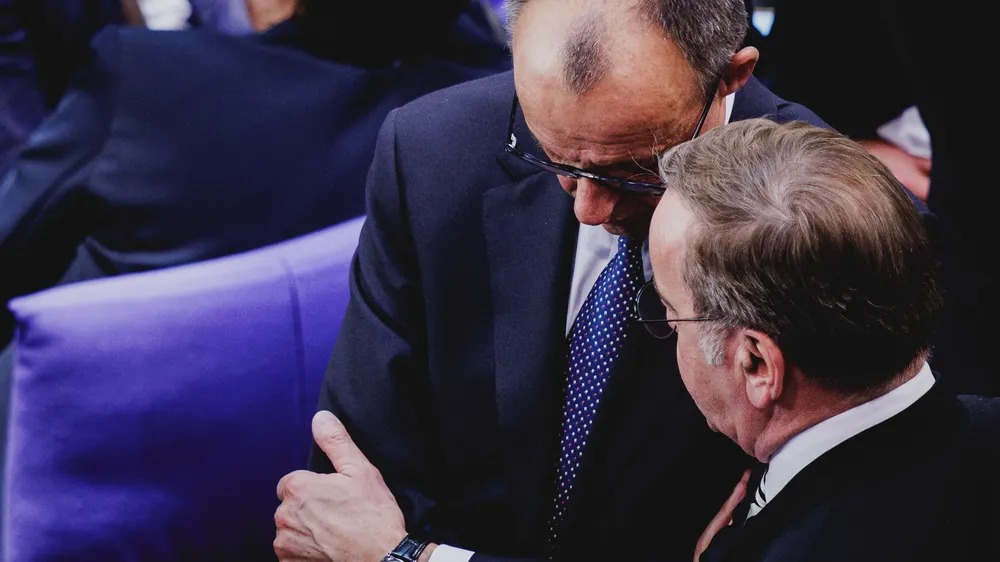
Until last Sunday, the CDU/CSU, which emerged as the leading party from the early federal elections, and the SPD, which came in third, negotiated the coalition agreement in 16 working groups.
Despite the intended confidentiality, many of the final documents were leaked to the media. Numerous proposed changes within the documents indicate that the parties are still far from reaching an agreement on many points.
The policy agendas under negotiation include migration; heating, energy, and climate; compulsory military service and military equipment; transportation, construction, and housing; citizen’s income; and finance.
Migration
Migration is one of the most hotly debated topics. Although CDU leader Friedrich Merz has announced a transformation in migration policy, the SPD is unwilling to follow suit on all points.
There is agreement that police at Germany’s permanently controlled borders should be able to turn back asylum seekers “in coordination” with neighboring countries, but what this precisely entails remains unclear.
Furthermore, Algeria, India, Morocco, and Tunisia will be quickly categorized as safe countries of origin, making it harder to obtain asylum. Immigrants who commit serious crimes will be deported.
Another clear decision is that no new admission programs will be opened for foreigners in vulnerable situations. Existing ones, such as for Afghans, will be terminated “as much as possible.” Individuals with subsidiary protection status will also not be allowed to bring their families from their home countries, though this affects only about a third of temporarily recognized refugees.
According to the final report of the migration working group, deportations to Afghanistan and Syria are planned, “starting with criminals and individuals at risk,” even though the new rulers in Syria are persecuting minorities.
Several minor measures have been agreed upon to deport more people more quickly. For instance, legal counseling before deportation will be abolished; previously, those legally rejected could still be legally represented.
In the future, the Federal Police will also be able to request detention to prevent those required to leave the country from absconding. Previously, only immigration authorities could do this.
Heating, energy, and climate
Although the CDU/CSU wants to view the new government’s energy policy as a “new beginning,” many points already agreed upon seem like a continuation of initiatives started by the traffic light coalition government that collapsed last year.
The likely CDU-SPD government does not intend to change the cornerstones of climate and energy policy: the commitment to climate neutrality by 2045, the coal phase-out by 2038, emissions trading, the expansion of renewable energy sources, and the use of hydrogen.
The construction of numerous new gas-fired power plants planned by the coalition government will also proceed. However, the early phase-out of coal power generation by 2030, once desired by the Greens, will be canceled.
The ‘Black-Red’ government now wants to permanently reduce the price of electricity by at least five cents per kilowatt-hour by lowering the electricity tax and grid fees. Energy-intensive industrial companies will also receive relief through an industrial electricity price, but this will cost the state billions.
How the expansion of electricity grids will proceed is unclear. The CDU/CSU wants to prioritize the construction of high-voltage overhead lines, which are cheaper but more exposed than underground cables. The SPD prefers underground cables to prevent protests.
The CDU/CSU wants to “exploit the potential for conventional gas production in Germany” and hopes for a breakthrough with new-generation nuclear power plants.
It also demands a quick review of whether recently decommissioned nuclear power plants can be reactivated, although experts have serious doubts about this. The SPD opposes all of these points.
Leaders also seem poised for difficult discussions regarding the long-debated heating law. The CDU/CSU wants the law repealed as announced but wishes to continue the “heating subsidy.” The Social Democrats only want to amend the law and make the subsidy socially graduated.
There is apparent agreement on climate money, but this too will likely remain theoretical. They state they want to return the revenue from the CO₂ price to citizens, but conditional on introducing “non-bureaucratic and socially graduated relief and subsidies for housing and mobility.” Despite billions in new debt, there is no money for a lump-sum payout.
Compulsory military service and the Bundeswehr
Discussions about the future of the German Armed Forces (Bundeswehr) are also ongoing. The working paper of the Foreign Relations and Defense Working Group shows consensus that the Bundeswehr must become stronger “short-term, decisive, and sustainable.”
Investments could be rapidly initiated through a “Bundeswehr Infrastructure Acceleration Act,” but this law has been in effect since 2022, and bureaucracy remains the biggest obstacle to the swift procurement of weapons and equipment.
The CDU/CSU therefore wants to remove some powers from the Koblenz Procurement Office and appoint an agency for this purpose. They also aim for a “multi-year investment plan,” because a single legislative period is considered too short for arms development and procurement.
The CDU/CSU also wants to reactivate compulsory military service. The SPD opposes this, favoring voluntary service for all and a “broad societal debate” on its introduction.
Transportation, construction, and housing
Regarding transportation, there is only one point of disagreement between the SPD and CDU/CSU: the speed limit on highways. The SPD wants a limit of 130 kilometers per hour, while the CDU/CSU rejects any limit.
On the other hand, there is clarity on the future of the Deutschlandticket (the subscription ticket for buses and trains) beyond 2025. There was initial resistance within the CDU/CSU, but an agreement has now been reached to continue the subscription. However, the price will increase “gradually and with social responsibility” starting in 2027.
The new coalition partners plan to fully utilize the special infrastructure fund for their plans to renovate the railway network: the SPD succeeded in increasing investments and establishing an infrastructure fund with a binding, long-term financing commitment for the railways.
Money from the special fund will also flow into the current renovation concept for busy high-speed train lines, thereby freeing up budget funds for neglected secondary lines.
At the same time, the future government partners are opening up a new financing gap of 5 billion euros for the railway. Until now, the road network had cross-financed the rail network with the help of revenue from truck tolls. In the future, however, financing cycles within a transport sector will remain closed, and truck tolls will flow to Autobahn GmbH.
From a climate policy perspective, air transport seems to be regressing. The likely new federal government wants to reverse the increase in the air traffic tax and continue supporting regional airports, which are often unprofitable.
However, there is at least some relief for local public transport: the SPD managed to ensure that federal regionalization funds primarily flow into local transport.
The SPD also achieved a victory in housing. The rent freeze, unpopular with the CDU/CSU, will be extended for another two years.
Citizen’s Income implementation
It has been agreed that the Citizen’s Income (Bürgergeld), introduced by the coalition government, will be renamed the “new basic income.”
Job centers will receive more money for administration. Conditions will be tightened. Accordingly, every unemployed person must “actively strive to find work.”
Sanctions will be applied “faster, simpler, and less bureaucratic.” Benefits for those who persistently refuse work will be completely cut, in line with the Karlsruhe jurisprudence.
The citizen’s allowance, which Ukrainians also receive and which the state sometimes grants without sanctions, had previously sparked heated debates about fairness.
Public finance
Negotiators have barely agreed on financial details. The CDU/CSU and SPD were able to gain some breathing room in the federal budget by relaxing the debt brake for defense spending. However, the additional fiscal leeway is limited, and the list of expensive election promises both parties want to implement is long.
Ultimately, the Federal Constitutional Court declared the solidarity surcharge (additional tax) legal on Wednesday. This means the federal government will retain annual revenues of 13 billion euros.
The main point of contention is what is possible regarding taxes. For example, it is argued that there isn’t enough money for broad income tax cuts. The SPD wants to increase the tax burden on high earners. This could increase federal revenues, but it is doubtful whether the CDU/CSU will agree to tax increases.
The CDU/CSU particularly wants to reduce the corporate tax from the current 30% to 25%. However, the SPD is only prepared to do this from 2029 and only wants to reduce it by one percentage point.
There is agreement on making investments in Germany more attractive. Depreciation rules are planned to be improved so that investment costs can be deducted from taxes.
EUROPE
F-35 debate intensifies across Germany and Europe
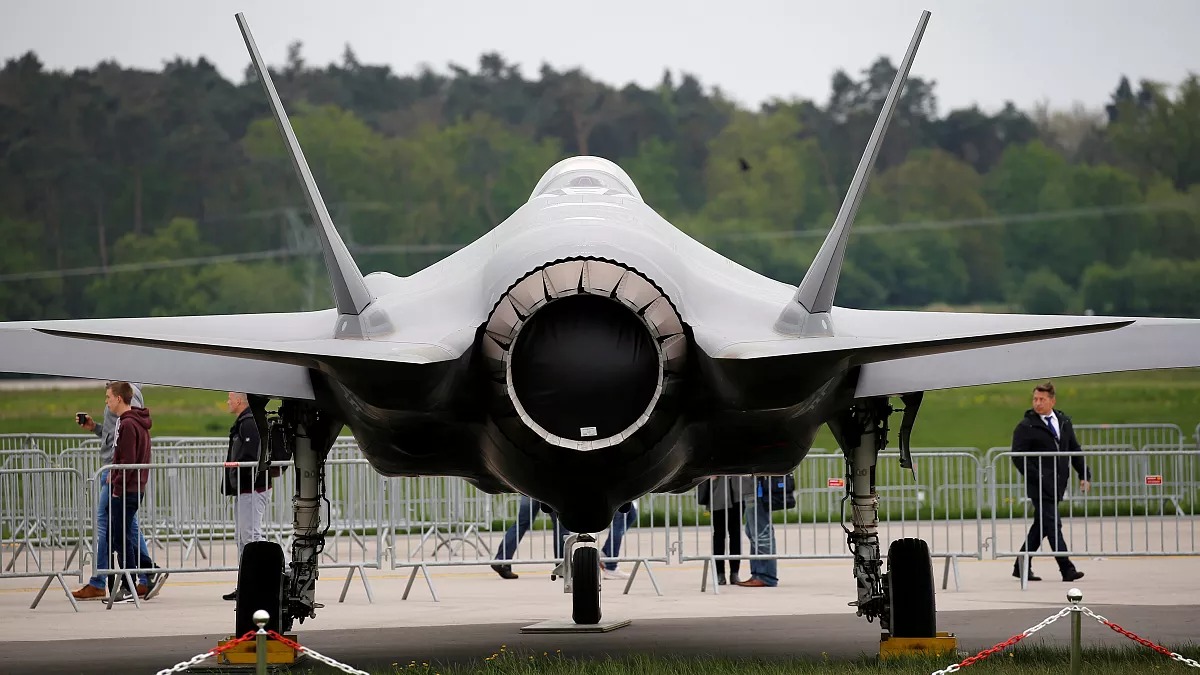
The debate over a potential withdrawal from the US F-35 fighter jet program is heating up in Germany and other European countries.
The background to this is that the jet can only be used with the approval of the US government, and restrictive provisions, for example regarding spare parts and software, make it impossible to escape dependence on the US in military operations with the F-35.
In Berlin, former “transatlanticists” in particular are pushing for withdrawal from the F-35 procurement program to achieve military independence.
Last week, a copy of the purchase agreement for the 35 F-35 fighter jets that Berlin decided to procure in March 2022 was leaked to the German magazine Stern. Details of the framework conditions for the purchase, which will cost €8.3 billion, thus emerged.
This purchase is being handled as part of the Foreign Military Sales (FMS) process, which is subject to strict rules. The F-35 purchase agreement grants Washington the authority to “terminate or suspend performance in whole or in part” without further notice “if required by the national interests of the US.” This means the US can unilaterally change the delivery time and quantity at any time. Contractual penalties are generally not provided for in the FMS procedure; legal recourse is excluded.
Once an F-35 fighter jet is delivered, no further modifications are permitted; spare parts and regularly required software updates are only available from the US manufacturer Lockheed Martin. According to the wording in the purchase agreement, “The customer is not authorized to carry out repair and maintenance work beyond the unit maintenance level.” This already guarantees that the German Air Force’s F-35s will only fly when the US administration wants them to.
Furthermore, the F-35’s basic software is kept secret. Therefore, it is impossible to check whether the jet can be influenced externally, but many assume this is possible. Data generated during operation, and especially during any mission, is collected and subsequently stored on Amazon Web Services, making it easily accessible to US authorities.
Finally, the US Foreign Assistance Act allows the US to “monitor the end-use” of the F-35 “at any time.” A “well-informed” source told the magazine Stern, claiming, “Targets, routes, indirectly tactics… US technicians are always on the plane.” An insider with “intelligence service knowledge” also explicitly confirmed this to the magazine, stating that “all mission planning is monitored in the US.”
Since last week, calls have been growing louder in Europe to avoid procuring F-35 jets if possible, or to withdraw from the agreement if a contract has already been signed. This was triggered on the one hand by the Trump administration’s decision to prohibit Ukraine from using US satellite data, and on the other hand by Washington’s continued efforts to acquire the autonomous Danish territory of Greenland.
For example, Danish conservative MP Rasmus Jarlov stated on X that he now regrets supporting Denmark’s decision to purchase 27 F-35 jets for its air force. Jarlov said, “I can imagine a situation where the US demands Greenland from Denmark and threatens to disable our weapons.” Jarlov argued that Copenhagen would then no longer be in a position to defend itself, making the purchase of US weapons “a security risk we cannot take.” He contended that Denmark will invest heavily in armaments in the coming years and should avoid American weapons wherever possible.
Some NATO countries are now considering abandoning the F-35. For example, Canada plans to withdraw from the F-35 purchase, but has already paid for 16 fighter jets due to be delivered early next year. According to Defense Minister Nuno Melo, Portugal, which previously planned to buy the US fighter jet, is also changing its mind. The French company Dassault Aviation has now offered to supply Rafale jets to the Portuguese government.
The Rafale is a fourth-generation fighter jet, unlike the fifth-generation F-35, but it is cheaper and requires no US components, thus offering independence from the US. French President Emmanuel Macron argued on March 16 that European countries should, in principle, switch from the F-35 to the Rafale; furthermore, the new Franco-Italian SAMP/T air defense system could be used instead of the US Patriot air defense system.
One challenge stems from the fact that a number of European NATO countries, such as the United Kingdom, Norway, the Netherlands, Belgium, and Italy, already possess F-35 jets. Many other countries, including officially neutral Switzerland, have placed binding orders for the aircraft.
Conflicting voices are also rising in Germany. Former “transatlanticists” in particular are distancing themselves from the F-35 procurement. Former Airbus CEO Thomas Enders, now president of the influential think tank German Council on Foreign Relations (DGAP), said last week, “Nobody needs the F-35”; Enders added that he “would be the first to cancel it under these new geopolitical conditions.” CDU foreign policy expert Roderich Kiesewetter also called for a “review of existing contracts with the US,” such as the F-35 purchase agreement, stating, “It is now absolutely essential to look for alternatives.”
Defense Minister Boris Pistorius, however, favors continuing with the F-35 purchase. One of the reasons he cites for this is nuclear sharing, whereby German Air Force fighter jets could drop US nuclear bombs in a war scenario. Observers note that dropping US nuclear bombs is already only possible on orders from Washington, making it irrelevant whether the F-35s could be paralyzed by the US as long as they are available solely for nuclear sharing. However, nuclear sharing itself is no longer considered secure.
Berlin has already transferred approximately $2.42 billion to Washington for the F-35 and has begun costly modifications at Büchel Air Base, where the US fighter jets are to be stationed.
-
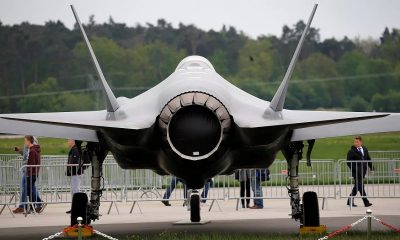
 EUROPE6 days ago
EUROPE6 days agoF-35 debate intensifies across Germany and Europe
-
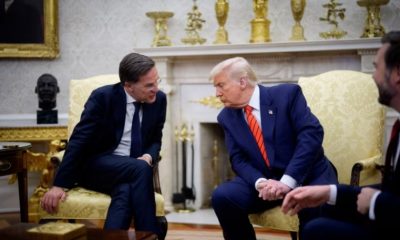
 EUROPE1 week ago
EUROPE1 week agoEurope plans for US absence in NATO with 5-10 year strategy
-

 ASIA2 weeks ago
ASIA2 weeks agoChina’s AsiaInfo expands with DeepSeek-powered AI
-
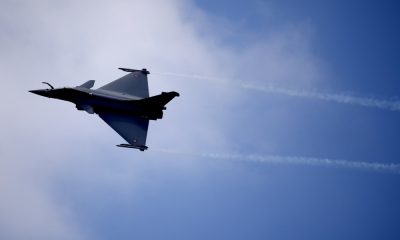
 EUROPE2 weeks ago
EUROPE2 weeks agoFrench defense industry gears up for war amid EU strategic autonomy push
-
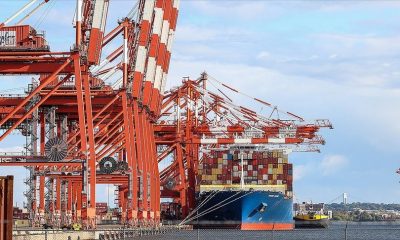
 DIPLOMACY7 days ago
DIPLOMACY7 days agoTrump’s proposed fees on Chinese ships threaten US maritime industry
-

 AMERICA2 weeks ago
AMERICA2 weeks agoTrump’s tariffs drive Nvidia to invest heavily in US manufacturing
-

 ASIA5 days ago
ASIA5 days agoBeijing’s energy rules threaten Nvidia H20 chip sales in China
-
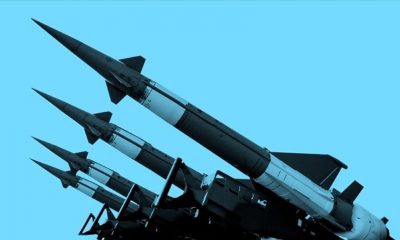
 EUROPE7 days ago
EUROPE7 days agoCalls for German nuclear armament grow louder


